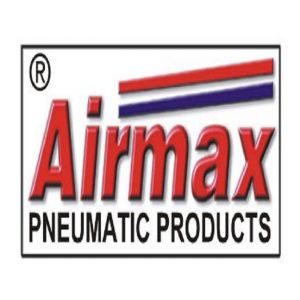Here is a Guide to Installing Pneumatic CylindersPosted by Airmax Pneumatics on October 8th, 2022  Different devices and systems use pneumatic cylinders to provide linear force. By applying compressed air to one side of a sealed barrel and exhausting it from the other side, they generate force. A piston/rod assembly contained inside extends or retracts as a result of this action. Proper installation of pneumatic cylinders is crucial. There is a risk of inaccurate or unreliable operation and premature failure otherwise. Pneumatic cylinders, which generate high forces in a small package, are particularly susceptible to this phenomenon. Therefore, incorrect installation can cause severe equipment damage and/or operator injuries. We will discuss how to install a pneumatic cylinder properly below. The importance of testing the system before putting it into operation and the precautions to be taken during installation are also highlighted. How Do I Install a Pneumatic Cylinder Properly?When installing a pneumatic cylinder, two important points need to be considered: the piston rod end and the body. Depending on the application, these points are fixed in different ways. The cylinder can be mounted rigidly to the machine bench in static applications. As a result of the high forces generated, pneumatic and pneumatic cylinders are typically mounted with a rectangular front flange mount (also sometimes referred to as MF1 mount or FH mount) or tapped holes in the front face (also sometimes referred to as MR1 mount or UH mount). Nonetheless, some pneumatic cylinders use a semi-rigid trunnion mounting method (MT1) that uses body supports or pivots and clevis pins. By following the piston rod's extension and retraction, they are able to rotate. Rarely, a side lug mounting method (MS2T mount) can be used. The cylinder must be able to pivot on its mountings in complex linkage applications. In order to meet this mounting requirement, there are several options. Using a front clevis, a central trunnion, or a rear hinge on the body of the cylinder can allow the cylinder and load system to achieve different degrees of balance. Alternatively, clevises, hinges, or universal eyes can be mounted at the end of piston rods to mount swivel attachments. When the cylinder is mounted on a trunnion, it is essential that the mountings allow the cylinder to oscillate freely and that the pipe connections can flex when in use. During the installation of a pneumatic cylinder, keep the following in mind:
Why Should I Test the System?The entire system must be tested before a cylinder can be operated to ensure it actuates with minimal resistance and experiences minimal side loading. A flexible air line and blow gun can be used to test if the cylinder has been installed properly and is able to move freely at the published minimum operating pressure. Test pneumatic cylinders at low pressures (approach and retract) without going into high pressures (intensification) to ensure the tooling and overall setup are aligned. It is important to follow the manufacturer's instructions for sequencing the approach, retracting, and intensification the cylinder. When installing pneumatic cylinders, what precautions should I take?Installing a pneumatic cylinder requires many considerations. For a safe installation, take the following precautions:
Airmax Pneumatic is a well-known double acting air cylinder manufacturer and supplier in India, since 1992. Like it? Share it!More by this author |


